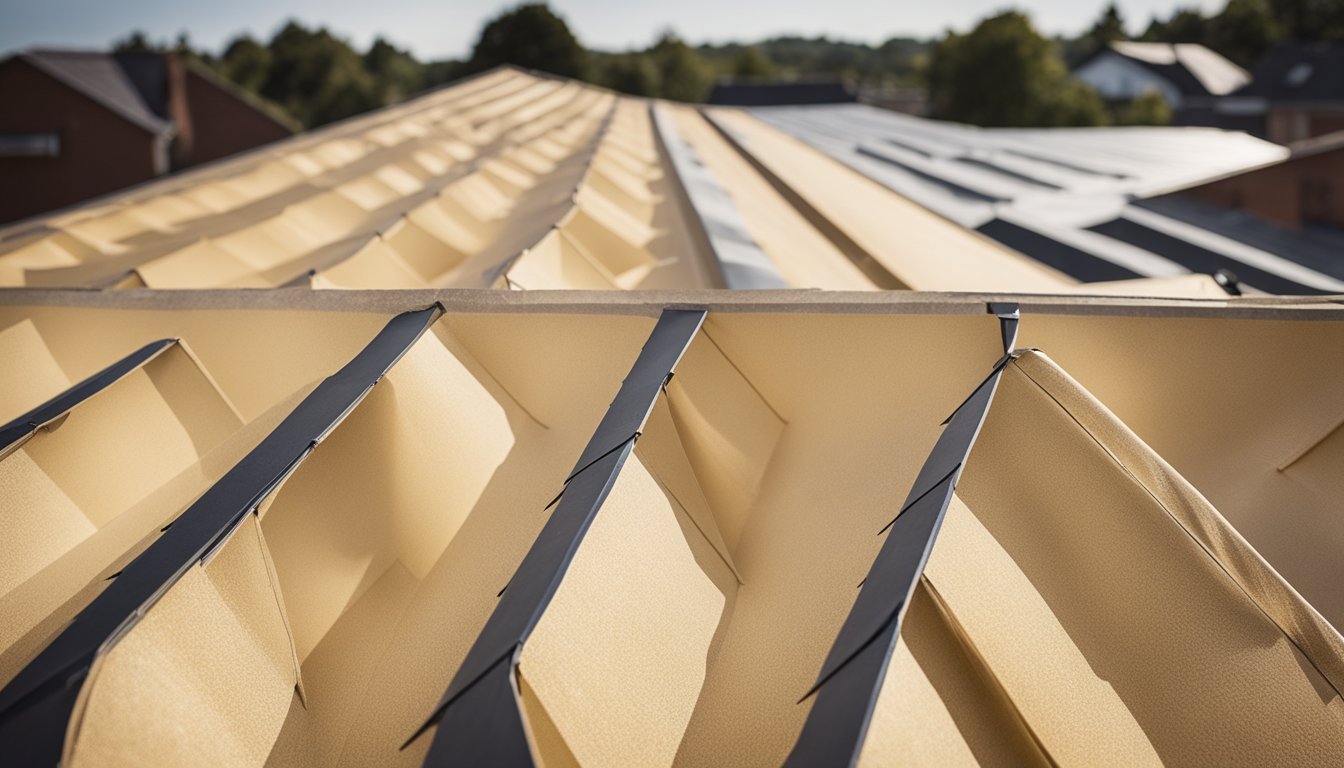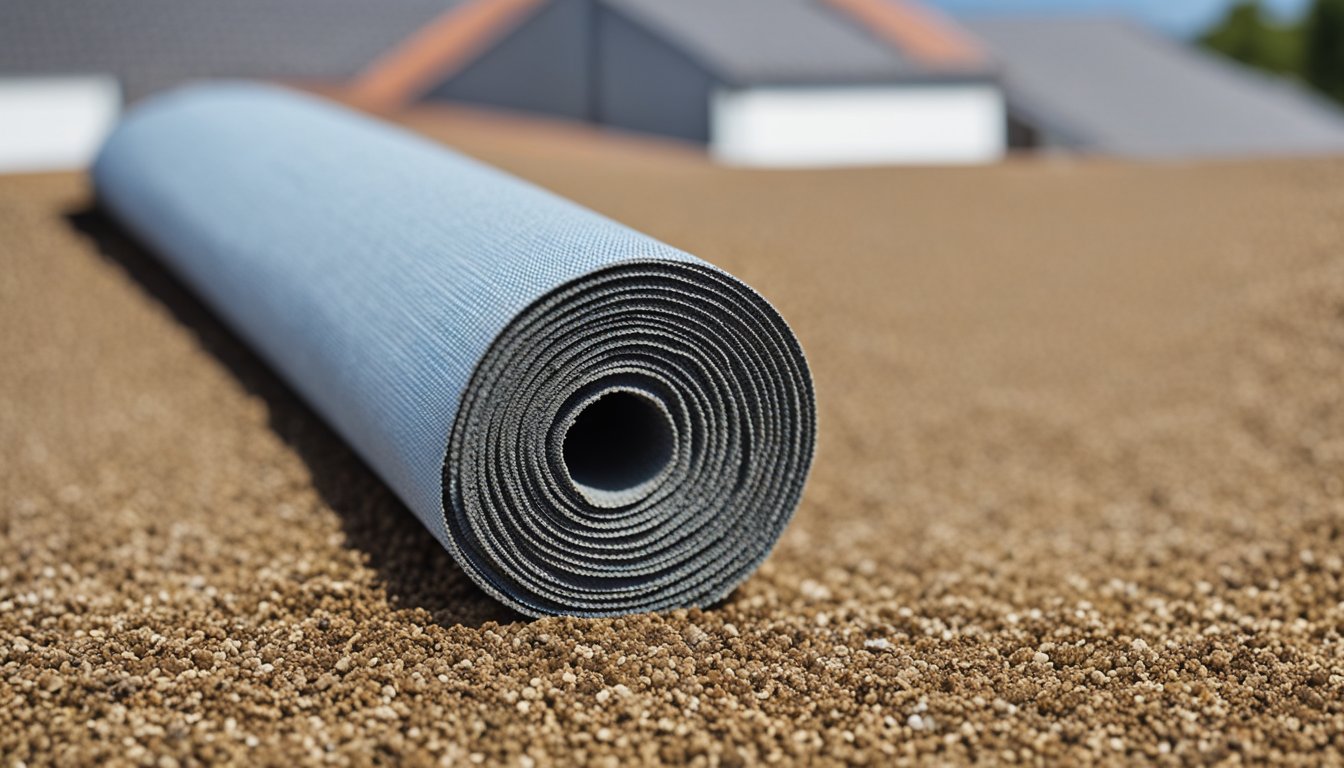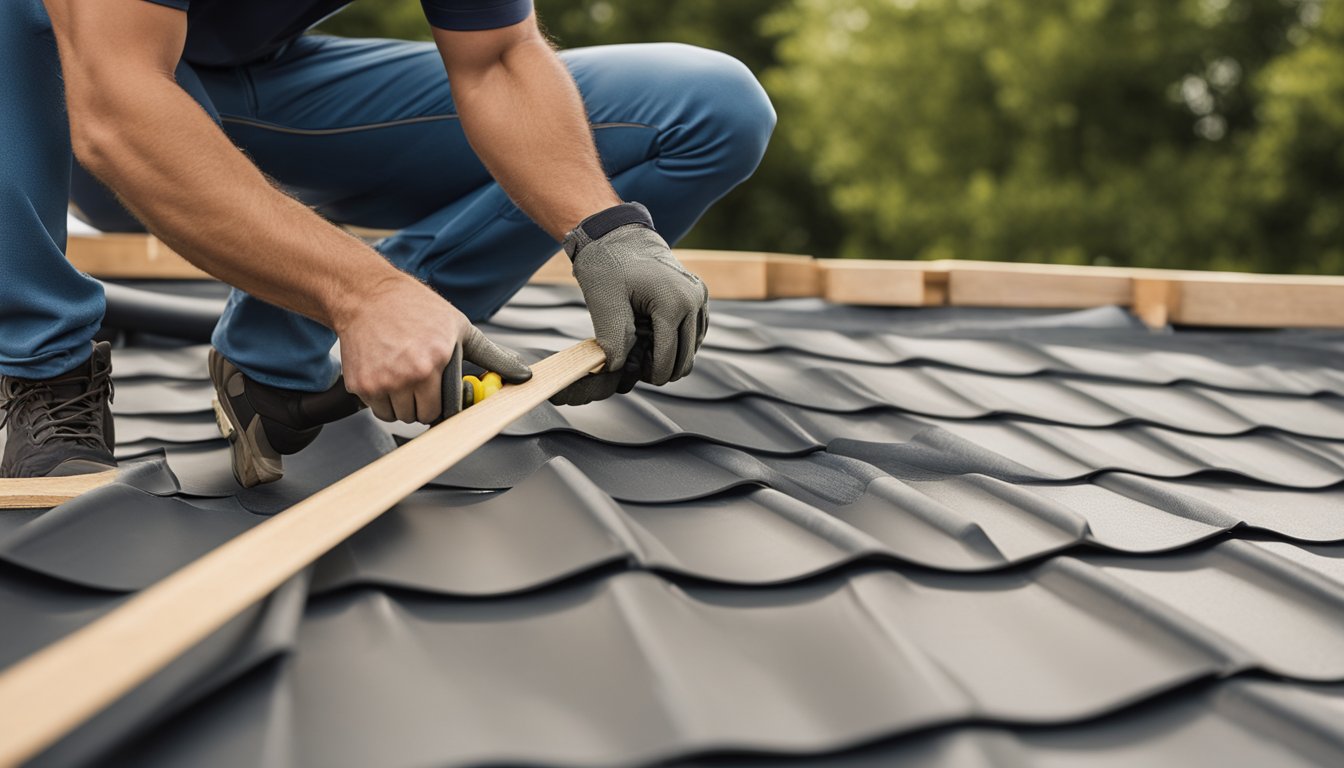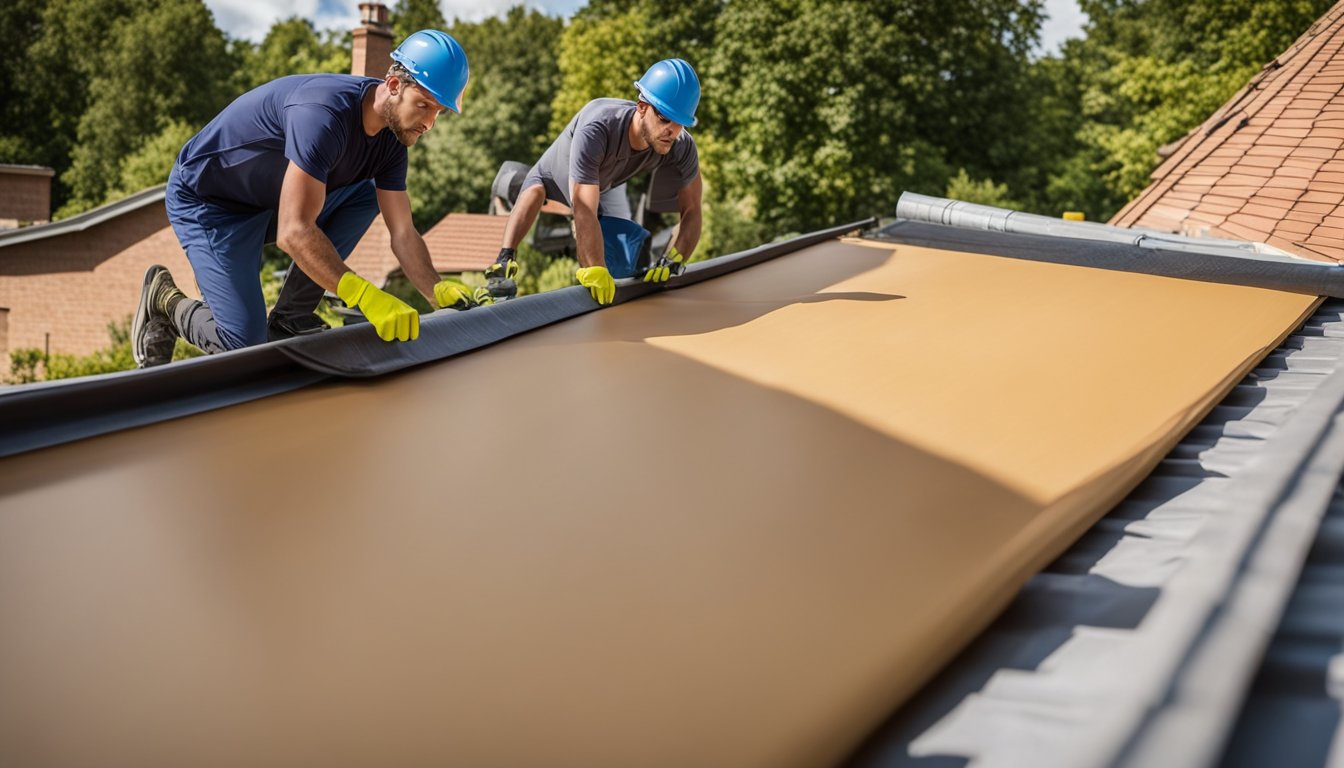Late updated: 29 Jun 2024 14:06
Written by: Oliver Bennett
Benefits Of Roof Underlayment For UK Homes: Enhancing Durability And Efficiency
Roof underlayment is crucial for protecting UK homes from the elements. Situated as a secondary barrier beneath the outer roofing, underlayment helps safeguard interiors from water damage, mould growth, and structural issues that can arise from the UK's unpredictable weather. The significance of a quality underlayment cannot be overstated, especially in a climate where rain and wind are frequent culprits of roof damage.

Our homes are our sanctuaries, and ensuring their longevity requires attention to all building materials. By investing in a durable roof underlayment, we add an extra layer of defence that enhances the durability and energy efficiency of our homes. Whether you're considering breathable, vapour-permeable options or non-breathable variants, understanding the unique benefits these materials offer can lead to smarter, more effective home maintenance decisions.
Let's explore the varied advantages of roof underlayment, from its role in extending roof life to its contribution to energy savings. These insights will shed light on why homeowners should prioritise underlayment in their roofing systems.
Key Takeaways
- Roof underlayment provides essential protection against water damage and mould.
- Installing quality underlayment enhances roof durability and energy efficiency.
- Different types of underlayment offer unique benefits for homeowners.
Essential Role of Underlayment in Roofing Systems

Roof underlayment serves as a crucial component in maintaining the longevity and strength of roofing systems. It provides added protection against various environmental factors and ensures a robust and durable roof structure.
Fundamentals of Roof Underlayment
Roof underlayment acts as a secondary barrier, positioned between the roof deck and the shingles or metal roofing materials. This layer enhances the roof's resistance to water damage, leaks, and other potential issues.
Typically installed over the roof deck, underlayment provides additional waterproofing and adds an extra layer of protection to the roof structure. This is particularly important in regions with heavy rainfall or snow.
Using underlayment also provides a safeguard during the installation process, protecting the roof deck from exposure to the elements before the final roofing material is applied.
Types of Underlayment: Felt Versus Synthetic
There are two main types of roof underlayment: felt and synthetic.
Felt underlayment, often made from asphalt-saturated felt, has been a traditional choice for many years. It is generally more affordable and provides decent protection against water and weather. However, it tends to be less durable, with a higher propensity to tear during installation or under heavy use.
On the other hand, synthetic underlayment is made from advanced polymers, making it more durable and resistant to tears and UV damage. This type of underlayment offers significantly better protection against weather-related issues and is often more lightweight and easier to handle than its felt counterpart.
Choosing between felt and synthetic underlayment depends on the specific needs and conditions of the roof, considering factors such as climate and budget.
The Importance of Moisture Protection
Moisture protection is a critical aspect of roof underlayment. By providing a water-resistant layer, underlayment helps prevent water from seeping into the roof deck and causing structural damage.
A good quality underlayment can prevent leaks, especially around areas prone to water infiltration, such as eaves and ridges. Some underlayment materials also offer breathability, allowing water vapour to escape while preventing liquid water from penetrating the roof structure.
The inclusion of a moisture barrier in roofing helps to protect the underlying materials from mould and rot, which can significantly compromise the integrity of the roof over time. This makes proper underlayment an essential investment for long-term roof health and durability.
Installation, Durability, and Energy Efficiency Considerations

Ensuring a properly installed roof underlayment not only enhances the roof's durability but also improves energy efficiency. It is necessary to account for cost and long-term value when choosing the right underlayment for your home.
Proper Installation Techniques for Durability
Proper installation of roof underlayment is essential for safeguarding the structural integrity of your roof. For the UK climate, it is important to consider wind-driven rain and water intrusion. Using reinforced bitumen membrane or self-adhered underlayment can provide an additional layer of protection. These materials often come with adhesive backing, ensuring a secure fit even under adverse weather conditions.
In windy conditions, it is critical to ensure the underlayment is correctly fastened to prevent lifting and subsequent water damage. Professional installation is recommended to meet specific installation requirements, maximise warranty coverage, and maintain resilience against UV exposure.
Improving Home Energy Efficiency
Roof underlayment can significantly enhance the energy efficiency of your home by serving as an insulating layer. Synthetic roofing underlayments, often made from polyethylene plastic or synthetic polymers, are particularly effective in boosting energy performance as they reduce thermal bridging and improve ventilation.
Rubberized asphalt underlayment with its high-performance characteristics can also contribute to better insulation, helping to keep homes warm in winter and cool in summer. Ensuring proper ventilation and insulation not only maintains indoor comfort but also helps reduce energy bills over time.
Cost Considerations and Long-Term Value
While underlayment materials such as synthetic options or rubberized asphalt may come at a higher cost, the long-term benefits often justify the initial expenditure. Durable underlayment reduces the frequency of roof replacements and ongoing maintenance costs.
Choosing cost-effective yet high-quality materials within your budget will ensure your roofing system remains durable and low-maintenance. Bitumen underlayments and synthetic alternatives offer varying levels of protection and longevity, contributing to the overall sustainability and performance of the roofing system. Investing in the right underlayment ultimately enhances the structural integrity and longevity of your entire roof.
Frequently Asked Questions

Roof underlayment is an essential component of roofing systems, providing critical benefits for homes in the UK. Below, we clarify its functions, conformities, types, consequences of omission, specific benefits, and its impact on longevity in the unique British climate.
What functions does roofing underlayment serve in UK homes?
Roof underlayment acts as a secondary barrier against moisture, preventing water from penetrating the roof deck and causing damage. It also enhances insulation and contributes to the overall energy efficiency of the home.
How does roof underlay conform to British building standards?
In the UK, roof underlay is required to comply with British Standards (BS 5534) and National House Building Council (NHBC) regulations. These standards ensure that the underlay provides adequate protection and ventilation, preventing condensation and ensuring durability.
Can you differentiate between the varieties of underlay available for UK roofs?
There are several types of roof underlayments available, including traditional roofing felt, synthetic underlayment, and vapour permeable (breathable) membranes. Each type has specific benefits and applications, with breathable membranes often used to complement high-level ventilation systems.
What could be the consequences of omitting underlayment in roof installations?
Without roof underlay, roofs become more susceptible to leaks, which can lead to significant water damage and costly repairs. It also compromises insulation, resulting in higher energy bills and less comfortable living conditions.
What specific benefits does underlayment offer for weather protection in the UK?
UK weather can be unpredictable, and roof underlay provides essential protection against rain, snow, and wind. It helps prevent water infiltration during severe storms and enhances the durability of the roofing materials by shielding them from direct exposure to the elements.
How does underlayment contribute to the longevity of a roof in the UK climate?
Underlayment extends the lifespan of roofing systems by adding an extra layer of protection. It mitigates the risks associated with moisture build-up and temperature fluctuations, ensuring that the roof remains structurally sound and functional over time.
